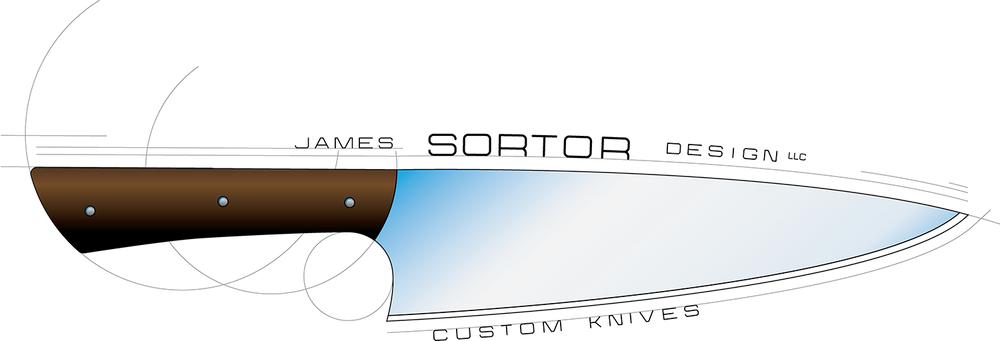Why AEB-L Steel?
-

The short answer is it is an ideal steel to make kitchen knives. The long answer is, well long. Read on if your like.
When learning to forge knives we all start out with 10 series steel. Normally referred to as 10xx series steel, the xx representing the “points” of carbon present in the steel. Points can get a bit confusing, basically one point would equal 0.01% of carbon present in the steel. 1055 (0.55% carbon) up to 1095 (0.95% carbon) are commonly used in knife making. The advantages of 10xx series steel are many: They are easy to forge and heat-treat. They take and hold an edge very well and they are inexpensive as knife steels go. The downsides are they rust easily and can be brittle and prone to breaking if heat-treated to a higher hardness. The harder a knife is the better it holds an edge, which is a good thing. Unless your blade chips or breaks in two. A softer knife will bend rather than break, but it will not hold an edge for long and requires frequent sharpening. You can make excellent blades from 10xx series steel but there are “better” steels out there.
While experimenting with steel types I came across 52100, also known as bearing steel. It is a lot like 10xx series steel with the addition of chromium. Not enough to make it a “stainless steel” although it does have some stain resistance. There is just enough chromium to make it tougher than 10xx series. That toughness makes it difficult to forge but also makes it difficult to break. It can also be heat-treated to a higher hardness. Once sharpened a 52100 blade will hold an edge better than a similar 10xx series blade and is less prone to breakage. Normally toughness and hardness are on the opposite ends of the spectrum. 52100 has a fine grain structure that allow it to be both tough and hard at the same time. This is the major advantage of 52100. However, it is still prone to rusting. It is a good steel to make knives out of and I still use it from time to time.
While researching “better” steel types I came across AEB-L, often described as a stainless-steel version of 52100. I was intrigued, could this be a better steel for kitchen knives? But there was a complication, AEB-L cannot be heat-treated the same way as 10xx series steels. 10xx is very easy to heat treat; stick it in a fire, get it red hot then cool it rapidly by dunking it in oil. Of course, this is a vast over simplification of the heat-treating process of 10xx series steel. But it isn’t rocket science either. AEB-L on the other hand requires precise temperature control only available in an electric kiln, plate quenching and some sort of cryogenic treatment. Again, not rocket science but it does require specialized equipment. AEB-L has a fine grain structure just like 52100 which allow it to be both hard and tough at the same time. It is also a stainless steel, and that makes a world of difference in kitchen knives. It is also an inexpensive steel. This combination makes AEB-L close to the ideal steel for kitchen knives.
There are “better” super steels out there, but they are expensive and difficult to work with. Both for the knife maker and the end user. If it is difficult for the knife maker to work with, they are going to charge more for the extra time they have to put in. If it is difficult to sharpen, the end user is not going to spend the time sharpening the knife. A dull knife is not enjoyable to use and more importantly a dull knife is dangerous.
To summarize the advantages of AEB-L are; superior hardness, superior toughness, it is a “stainless steel” and it is inexpensive.

